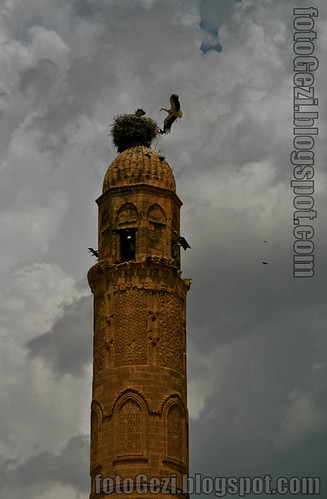 Hasankeyf is a city located along the Tigris River in the Batman Province of southeastern Anatolia, Turkey. It is an ancient city, with roots going back 10,000 years. (Greek: Kiphas; Latin: Cepha; Aramaic and Arabic: Hisn Kayfa) It was declared a natural conservation area by Turkey in 1981.
Hasankeyf is a city located along the Tigris River in the Batman Province of southeastern Anatolia, Turkey. It is an ancient city, with roots going back 10,000 years. (Greek: Kiphas; Latin: Cepha; Aramaic and Arabic: Hisn Kayfa) It was declared a natural conservation area by Turkey in 1981.With its history that spans nine civilizations, the archaeological and religious significance of Hasankeyf is considerable. Some of the city's historical treasures will be inundated if construction of the Ilısu Dam — is completed. These include ornate mosques, Islamic tombs and cave churches.
The Romans had built a fortress on the site and the city became a bishopric under the Byzantine Empire. It was conquered by the Arabs, in ca. 640, who built a bridge over the Tigris river. The city was successively ruled by the Artukids and Ayyubids. The city was captured and sacked by the Mongols in 1260. Following the Ottoman ascendancy established by Selim I in the region in the early 16th century, the city became part of the Ottoman Empire during Sultan Süleyman I's campaign of Irakeyn (the two Iraqs, e.g. Arabian and Persian) in 1534, at the same time as Diyarbakır, Mosul, Baghdad and Basra.
Ilisu Dam project prompted the World Monuments Fund to list the city on its 2008 Watch List of the 100 Most Endangered Sites in the world. The flooding that would follow construction of the Ilisu dam would destroy some of Turkey's most ancient archeological sites, including the 2,000-year-old city of Hasankeyf. Dam supporters point out that Hasankeyf consists of upper and lower towns, and that only the lower settlement will be completely submerged by the flooding. They also insist that material of historical value will be salvaged from the lower town before it is flooded -- and a number of archeologists are indeed working to recover artifacts from the area.
View Larger Map